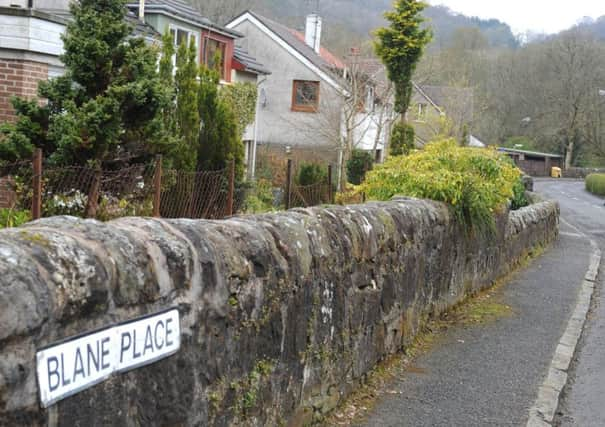Blanefield: Cash boost for ‘arsenic village’


Ministers are to provide £255,000 to help decontaminate land in Blanefield, Stirlingshire, which has been found to contain lead and arsenic. The Scottish Government has been urged to match the funding to allow work to get under way.
After an inspection by the Scottish Environment Protection Agency (Sepa) in 2012, 13 households in the area were told their land was contaminated with traces of lead and arsenic.
Advertisement
Hide AdAdvertisement
Hide AdResident Martin McGougan said the money, which will be given to the Scottish Government but ringfenced solely for use in the village, was a “massive step forward” in the fight to have the costs reduced.
He said: “This is great news and we are delighted to see action is being taken.
“I met Treasury officials and, although they gave an assurance it would be looked into, I did not expect an answer so quickly.”
Homeowners face bills of between £14,000 and £102,000 to have the land made safe, with the total cost expected to be about £600,000.
The ground is the former site of the Blanefield Printworks, which closed in 1898, and it is thought the chemicals leaked into the ground from dye vats.
Problems have been made worse by a landfill tax that adds significantly to the overall clean-up costs, and residents had called on the Treasury to waive this part of the bill.
However, officials have instead announced a one-off payment and called on the Scottish Government to put up a similar amount of cash. Stirling Council has already offered £125,000 towards the costs.
Stirling MP Anne McGuire pursued the issue with the Treasury after plans to help with costs were initially ruled out by Westminster. She said: “This is fantastic news and a huge step forward to meeting the costs of the decontamination.”
Advertisement
Hide AdAdvertisement
Hide AdStirling MSP Bruce Crawford said it was a “real breakthrough” and that he would approach Scottish finance secretary John Swinney about the issue.
Printing on calico was a vital trade in the 18th and 19th centuries, as the material was used for packaging goods, including flour, sugar, and dried fruit.
It began in Blanefield in the 1790s, and by the 1850s a total of 500 men, women and children were working at the printworks. Seven were killed in an explosion in 1864 that injured seven others, and in 1875 the whole works were consumed by fire. The re-opening of the works the following year was delayed by an early pollution case brought by Sir William Edmonstone, MP for Stirlingshire and aide-de-camp to Queen Victoria.
In the second half of the 19th century, the works were producing nearly half a million pieces a year, but the writing was already on the wall for the calico trade as most of the raw cloth was by then being produced in Lancashire and transport costs to Scotland were crippling.
In 1898 the works were sold to a syndicate which was “rationalising” the UK calico printing trade, and was shut down.